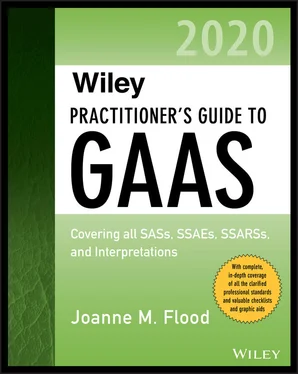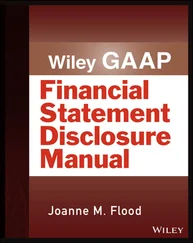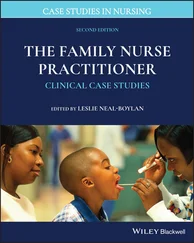Form, Content, and Extent of Audit Documentation
The quantity, type, and content of the audit documentation are based on the auditor’s professional judgment and vary with the engagement. Factors to consider in determining the content of audit documentation are discussed in the following paragraphs.
The auditor should prepare audit documentation on a timely basis that would allow an experienced auditor 1having no previous connection with the audit to understand:
The nature, timing, and extent of auditing procedures performed to comply with GAAS and applicable legal and regulatory requirements;
The results of the audit procedures performed and the audit evidence obtained; and
The significant findings for issues that arose during the audit, the conclusions reached on those significant matters, and professional judgments made in reaching those conclusions.
(AU-C 230.08)
Sufficiency of Audit Documentation
Audit documentation should include:
Who reviewed specific audit work and the date and extent of the review
Who performed the audit work and the date the work was completed
Identifying characteristics of specific items tested
(AU-C 230.09)
Audit documentation should also include abstracts or copies of significant contracts or agreements that involved audit procedure. (AU-C 230.10)
Documentation of Significant Findings
The auditor should document significant audit findings or issues, actions taken to address them (including additional evidence obtained), and the basis of the conclusions reached. (AU-C 230.11) Significant audit findings or issues include:
Matters that are both significant and involve the appropriate selection, application, and consistency of accounting principles with regard to the financial statements, including related disclosures. Such matters often relate to (1) accounting for complex or unusual transactions or (2) estimates and uncertainties, and the related management assumptions, if applicable.Results of auditing procedures that indicate that the financial statements or disclosures could be materially misstated or that the auditing procedures need to be significantly modified.Circumstances that cause significant difficulty in applying necessary auditing procedures.Other findings that could result in a modified auditor’s report.(AU-C 230.A10)
The auditor should document discussions with management and those charged with governance, including when and with whom, about significant findings. (AU-C 230.11)
Departures from a Relevant Requirement
The auditor may find it necessary to not perform a required procedure. If so, the auditor should document the reason for the departure and how alternative procedures enabled the auditor to fulfill the objectives of the audit. (AU-C 230.13)
This documentation is required only if the required procedure is relevant to the audit. For example, if the entity does not have an internal audit function, procedures in AU-C 610 would not be relevant.
Factors to Consider in Determining the Nature and Extent of Audit Documentation
The auditor should consider the following factors in determining the nature and extent of the documentation for an audit area or auditing procedure:
The size and complexity of the entity
The risk of material misstatement associated with the assertion, or account or class of transactions
The extent of judgment involved in performing the work and evaluating results
The nature of the auditing procedure
The significance of evidence obtained to the tested assertion
The nature and extent of identified exceptions
The need to document a conclusion or basis for a conclusion not readily determinable from the documentation of the work performed
The methodologies or tools used
(AU-C 230.A4)
Documentation of Report Release Date and Revisions
The auditor should document the report release date and complete the assembly of the final audit file on a timely basis, but no later than 60 days following the report release date. (AU-C 230.15–.16) After this date, the auditor must not delete or discard existing audit documentation before the end of the specified retention period, not less than five years from the report release date. If changes are made to the audit documentation after the documentation completion date, the auditor should document when and by whom the changes were made, the specific reasons for the changes, and the effect of the changes, if any, on the auditor’s previous conclusions. (AU-C 230.17 and .18)
Ownership and Confidentiality
The auditor owns the audit documentation, but his or her ownership rights are limited by ethical and legal rules on confidential relationships with clients. The auditor should adopt reasonable procedures to protect the confidentiality of client information. (AU-C 230.19) The auditor should also adopt reasonable procedures to prevent unauthorized access to the audit documentation. Sometimes audit documentation may serve as a source of reference for the client, but it should not be considered a part of, or a substitute for, the client’s accounting records.
Standardization of Audit Documentation
Audit documentation should be designed for the specific engagement; however, audit documentation supporting certain accounting records may be standardized.
The auditor should analyze the nature of his or her clients and the complexity of their accounting systems. This analysis will indicate accounts for which audit documentation may be standardized. An auditor ordinarily may be able to standardize audit documentation for a small-business client as follows:
Cash, including cash on hand
Short-term investments
Trade accounts receivable
Notes receivable
Other receivables
Prepaid expenses
Property, plant, and equipment
Long-term investments
Intangible assets
Deposits
Accrued expenses
Taxes payable
Long-term debt
Stockholders’ equity accounts
Preparation of Audit Documentation
All audit documentation should have certain basic information, such as the following:
1 HeadingName of clientDescription of audit documentation, such as:Proof of cash—Fishkill Bank & Trust CompanyAccounts receivable—confirmation statisticsPeriod covered by engagementFor the year ended …
2 An index numberAll audit documentation should be numbered for easy reference. Audit documentation is identified using various systems, such as the following:AlphabeticalNumbersRoman numeralsGeneral ledger account numbersA combination of the preceding
3 Preparer and reviewer identificationIdentification of person who prepared audit documentation and date of preparation:If the client prepared the audit documentation, this should be noted. Person who checked papers also should be identified.Identification of person who reviewed the audit documentation and date of review.
4 Explanation of symbolsSymbols used in the audit documentation should be explained. Symbols indicate matters such as the following:Columns were footed.Columns were cross-footed.Data were traced to original sources.
5 Source of informationThe audit documentation should indicate source of information:Client recordsClient personnel
One page of audit documentation may provide documentation for more than one account. Many balance sheet accounts are related to income statement accounts. In these circumstances, the audit work on the accounts should be documented in one page of audit documentation. Examples of related accounts are the following:
Читать дальше












